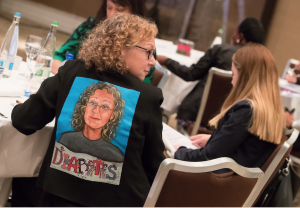Evidence-based hope in diabetes – Scott’s Diabetes

Bill Polonsky: And starting on the left side of your screen, they found that about 30% of this population already had significant vision loss, severe vision loss, or gone blind. that middle column, they found about 12% already had quite significant amputations. And over there on the right, what we call nephropathy, which is kidney disease, that well more than a third, almost 40%, already had nephropathy. And when we show this, and Susan, I’m sure, can tell you this, she sees the same thing, we find that most large groups of folks with type 1 will go, yeah, I’m not too surprised. That’s about what I would have expected.
But if I leave this up long enough, someone will say, hey, why does that say 1978? And I go, oh yeah, forgot to tell you something. This is really, really old data. This was published in 1978. This was a time when there was no such thing as self-monitoring of blood glucose, much less continuous glucose monitoring. We didn’t have analog insulins. We actually didn’t have any convincing evidence that trying to manage your blood sugars mattered anyway. So let’s put this aside and say, well, what about… the 21st century.
And so we turn to a study called the EDIC trial, where they’ve been following another large group of folks with type 1 diabetes for 30 years, but it’s the 21st century now, not back in 1978. And we can ask the same question, which is, well, what percentage of those people here in the 21st century, in this nice program, where they had regular follow-up care for all these decades, had run into the same scary complications? Well, their numbers look like this:








